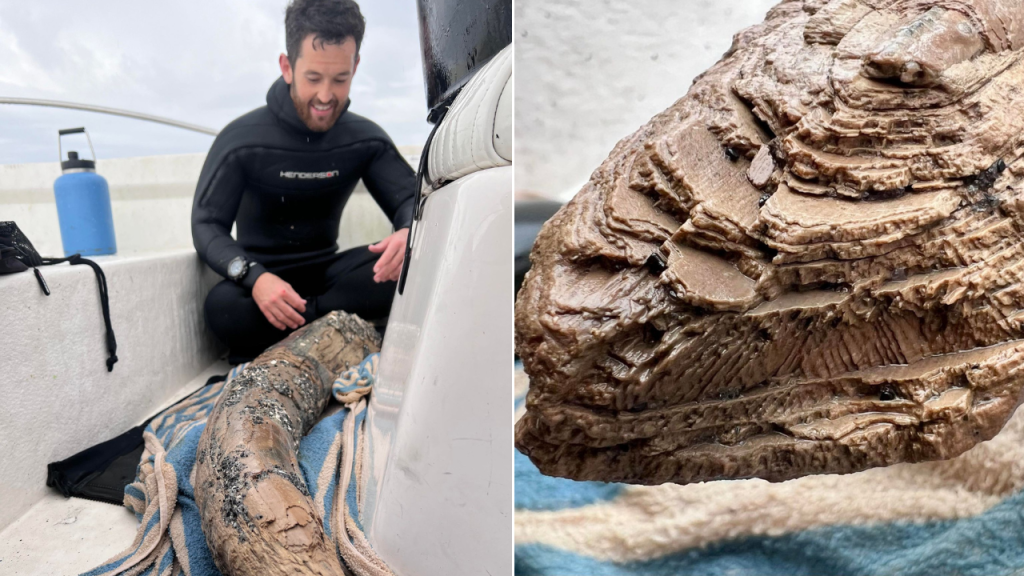A Florida man recently found a prehistoric jackpot while diving off the Sunshine State’s coast. The man, who studied marine biology at the University of South Florida, discovered an ancient mastodon tusk while scavenging for fossils off Manasota Key, around 90 miles south of Tampa. The relic was found in April and has not been dated, but could be millions of years old. The man, who has been scuba diving for 12 years, has been a fossil hunter since childhood when his father would take him to construction sites to look for fossils.
The discovery of the mastodon tusk is considered rare, as most tusks found in Florida are delicate and easily crumble apart. American Mastodons went extinct around 10,500 years ago and their fossils have been found across North and Central America. Mastodons are not the same species as mammoths, although they shared a common ancestor with mammoths and elephants. The creatures could grow up to 10 feet tall and co-existed with mammoths in many places, but all North America’s proboscideans went extinct around 10,500 years ago.
Lundberg advises aspiring fossil hunters to remember to obtain a fossil permit if they are lucky enough to find a prehistoric object. In Florida, fossil permits cost only five dollars each. His advice for finding fossils is to explore and keep looking, as prehistoric objects can be found all over the state. As for the ancient mastodon tusk he discovered, Lundberg plans on keeping it unless experts deem it scientifically important enough to donate. He will report the discovery to the Florida Museum of Natural History at the end of the year.
The National Park Service states that mastodons have been around for millions of years, while mammoths arrived in North America during the Pleistocene ice ages. The Pleistocene epoch lasted from 2.6 million years ago to 11,700 years ago, and all North America’s proboscideans went extinct around 10,500 years ago. Despite their similarities, mastodons and mammoths are different species. The mastodon tusk found by Lundberg is considered to be well-preserved and larger than most, making it a significant discovery in the field of paleontology.
Experts from the Florida Museum of Natural History were not available for comment at the time of publication regarding the mastodon tusk discovery. Fossils and prehistoric objects are important for understanding the history of the planet and its inhabitants, providing valuable insights into ancient ecosystems and the evolution of various species. Lundberg’s find showcases the potential for individuals to make significant contributions to the field of paleontology by exploring and preserving these relics. The discovery of the mastodon tusk highlights the importance of fossil hunting and the need to follow regulations to protect and study these valuable artifacts.


